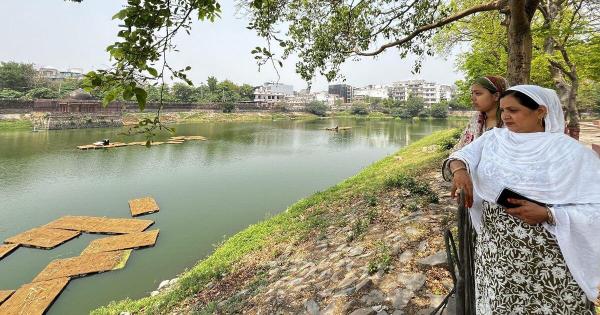
Located in the historic neighbourhood of Mehrauli, is the Hauz-i-Shamsi, a reservoir dating back to common era. It was built by the of the Delhi Sultanate, Shamsuddin Iltutmish of what is referred to as the Slave Dynasty.
Every year, this ancient water body stands as a silent witness to the Phool Walon Ki Sair festival at the adjoining , which is decorated with fresh flowers to celebrate the Ganga-Jamuni tehzeeb, or syncretic Hindu-Muslim culture. For the rest of the year, it brings joy to many people who live around it in homes that stand cheek-by-jowl in the narrow, serpentine lanes of Mehrauli in South Delhi.
“Every morning when I wake up and step out on the balcony of our house, I see the jhilmil [sparkling] water of our Shamsi talab. Sunrays dance on it, which is a beautiful sight,” Zaida Zehra told Mongabay India.
Zaida’s home, where she lives with her husband and two school-going daughters, is in Ward 8, overlooking the lake. She is from Moradabad in Uttar Pradesh and moved to Mehrauli 18 years ago after marriage.
But the waterbody was not always a sight for sore eyes, said Zaida.
Hauz-i-Shamsi, or a , is a site under the Archaeological Survey of India. It was constructed to collect rainwater and...









